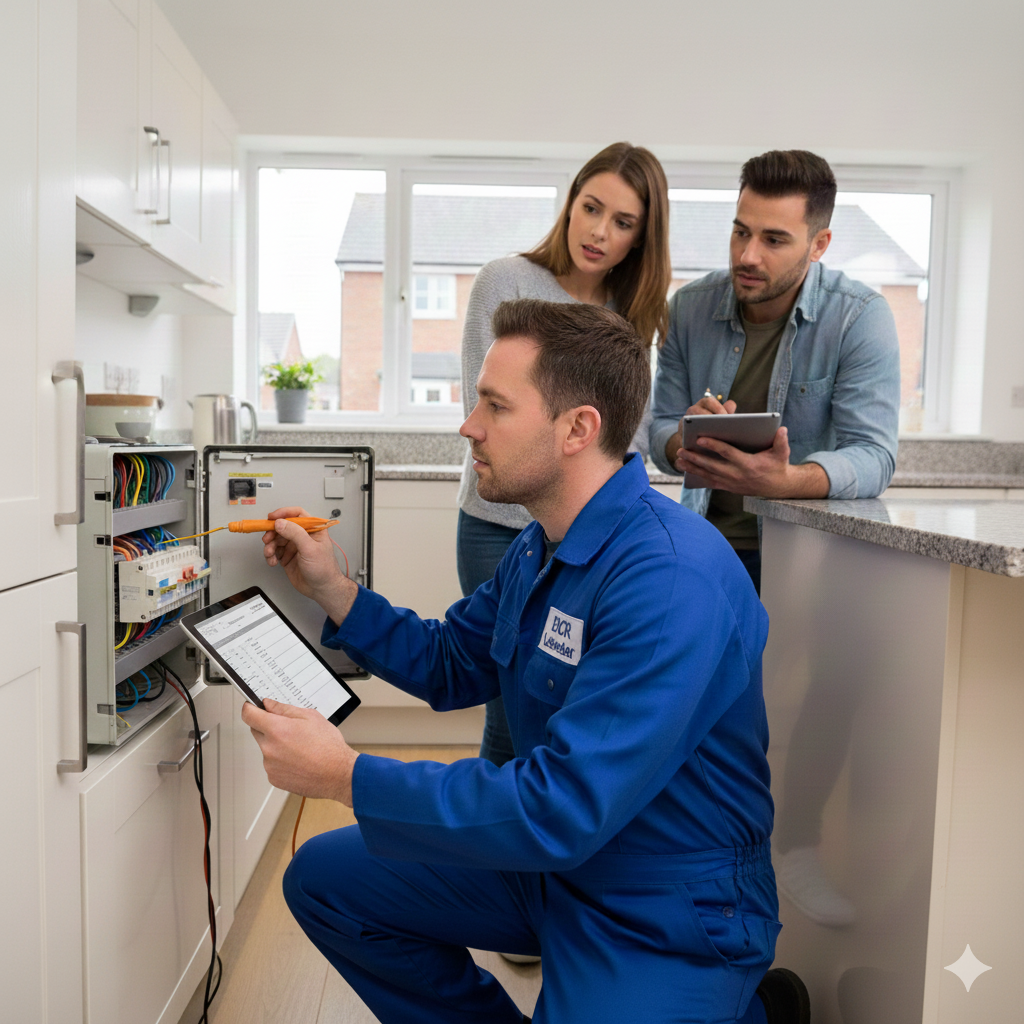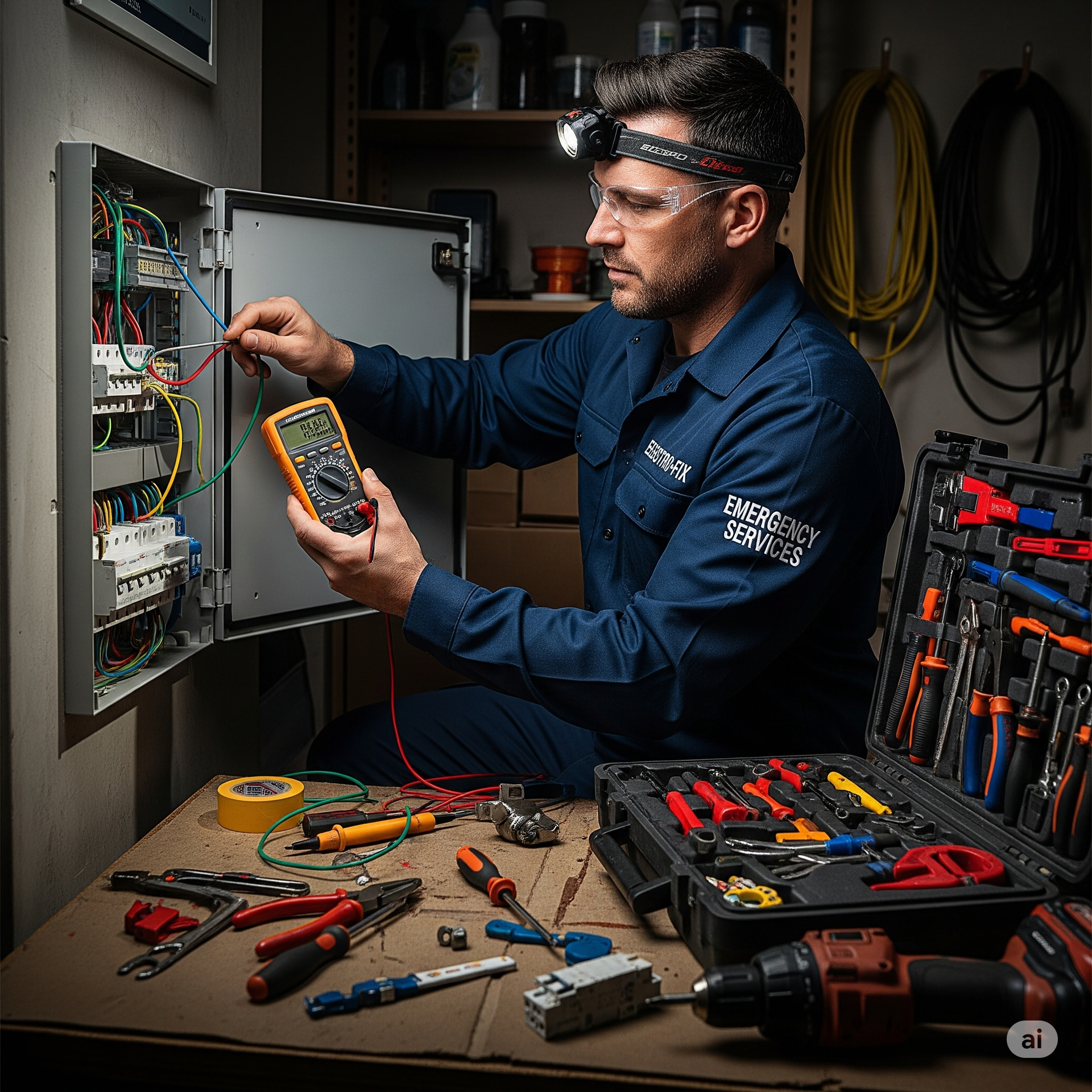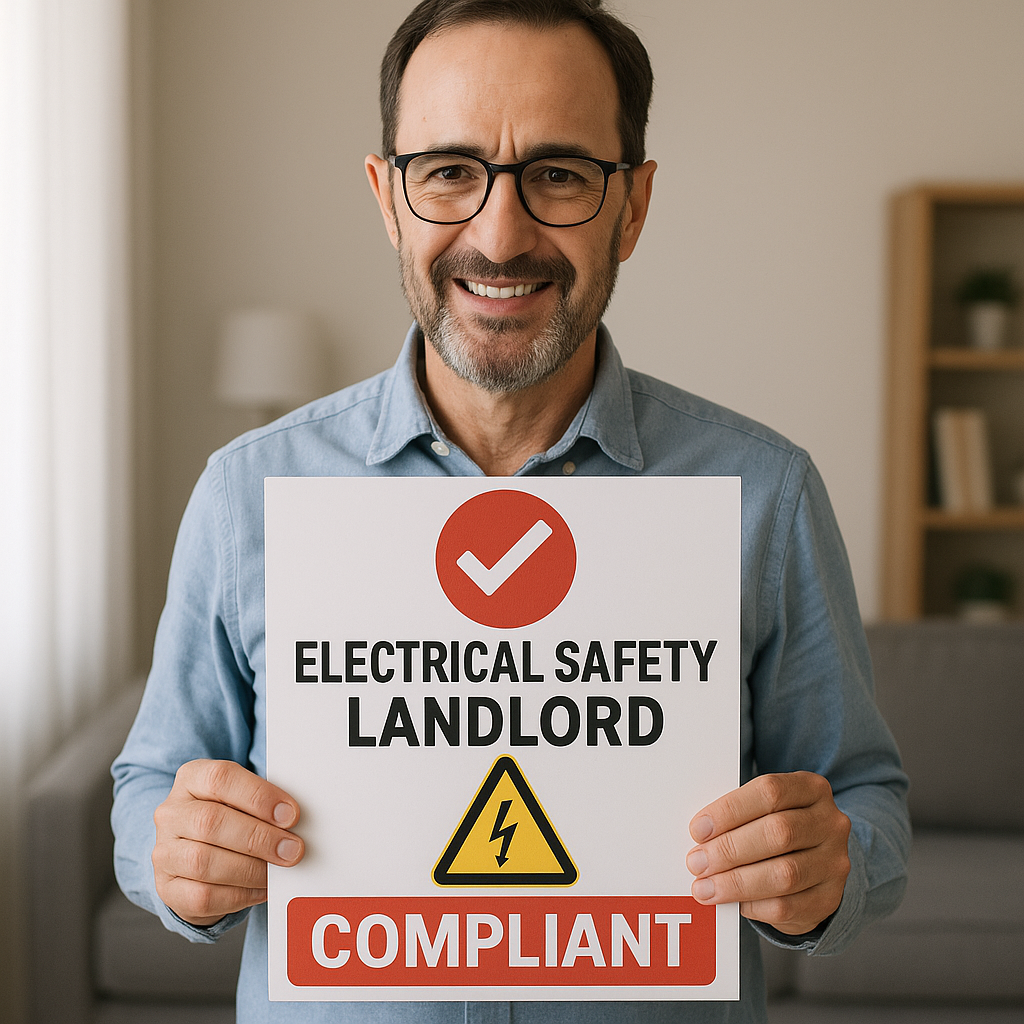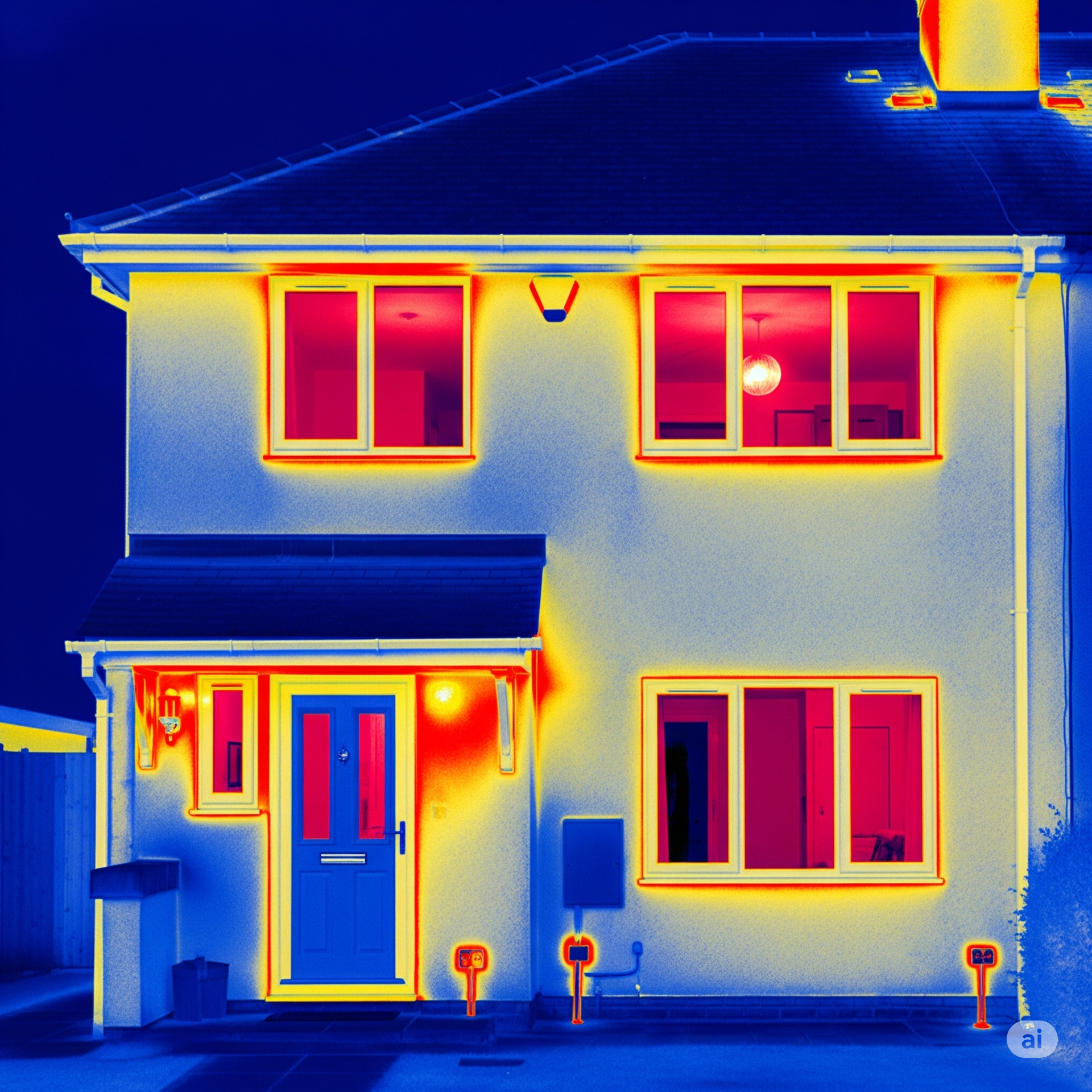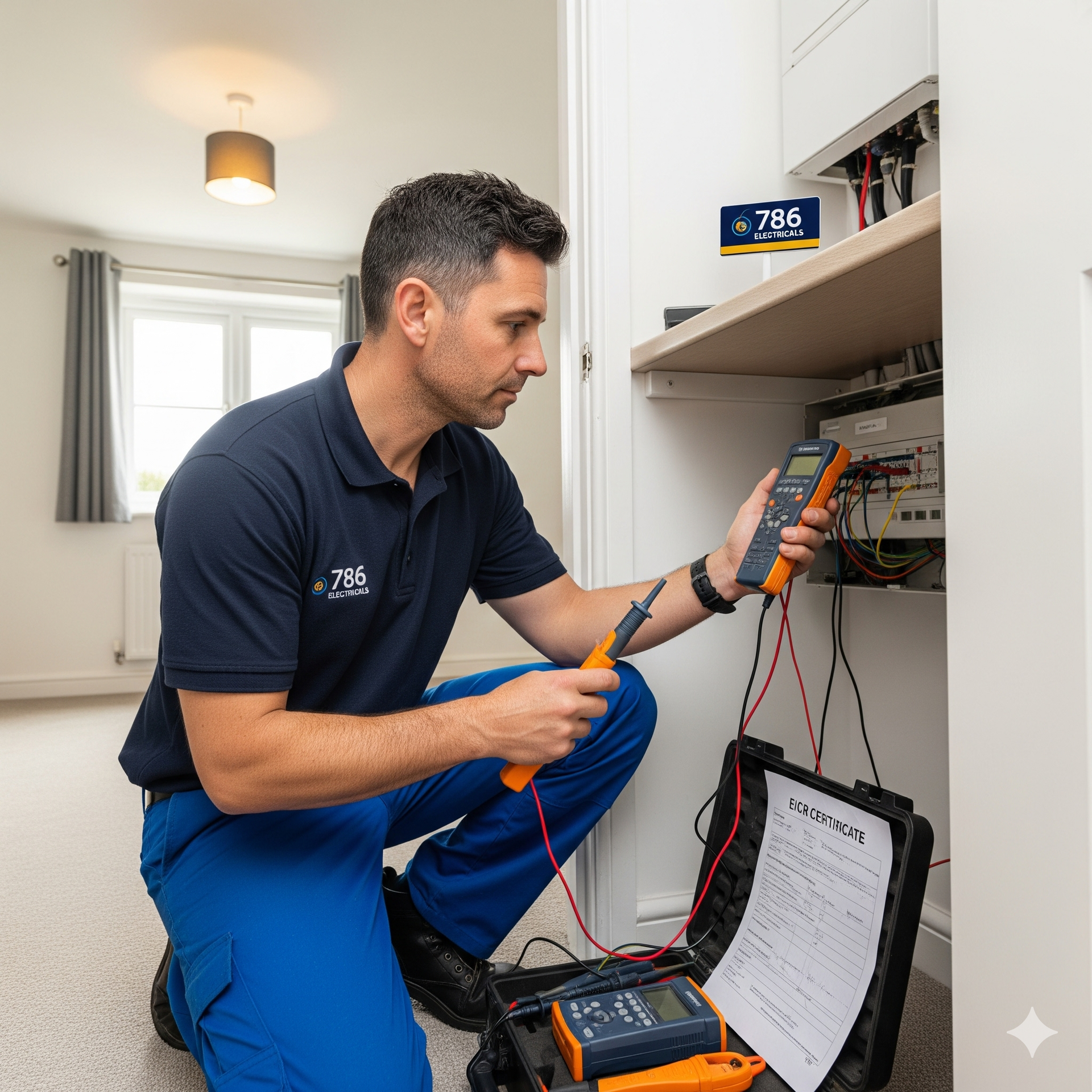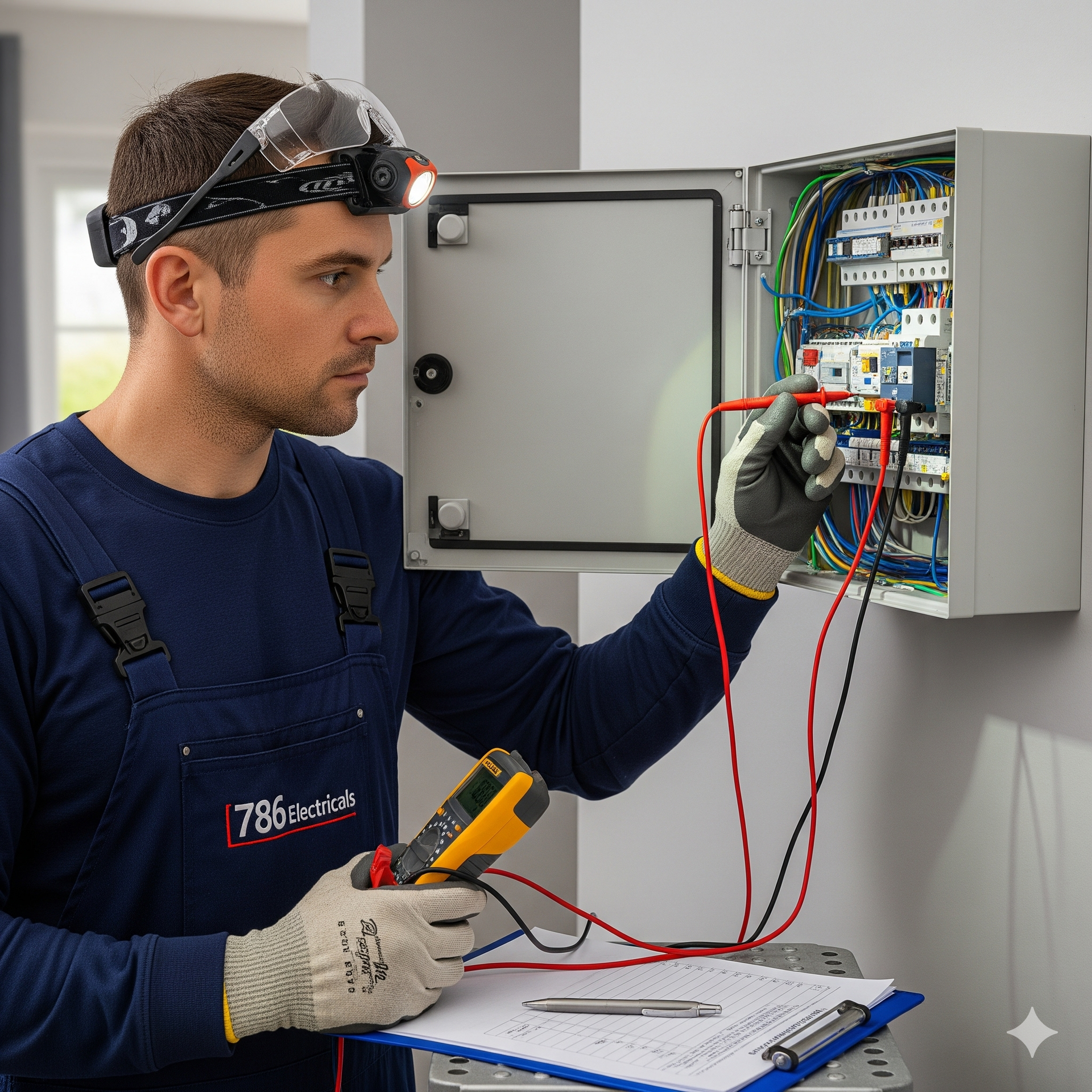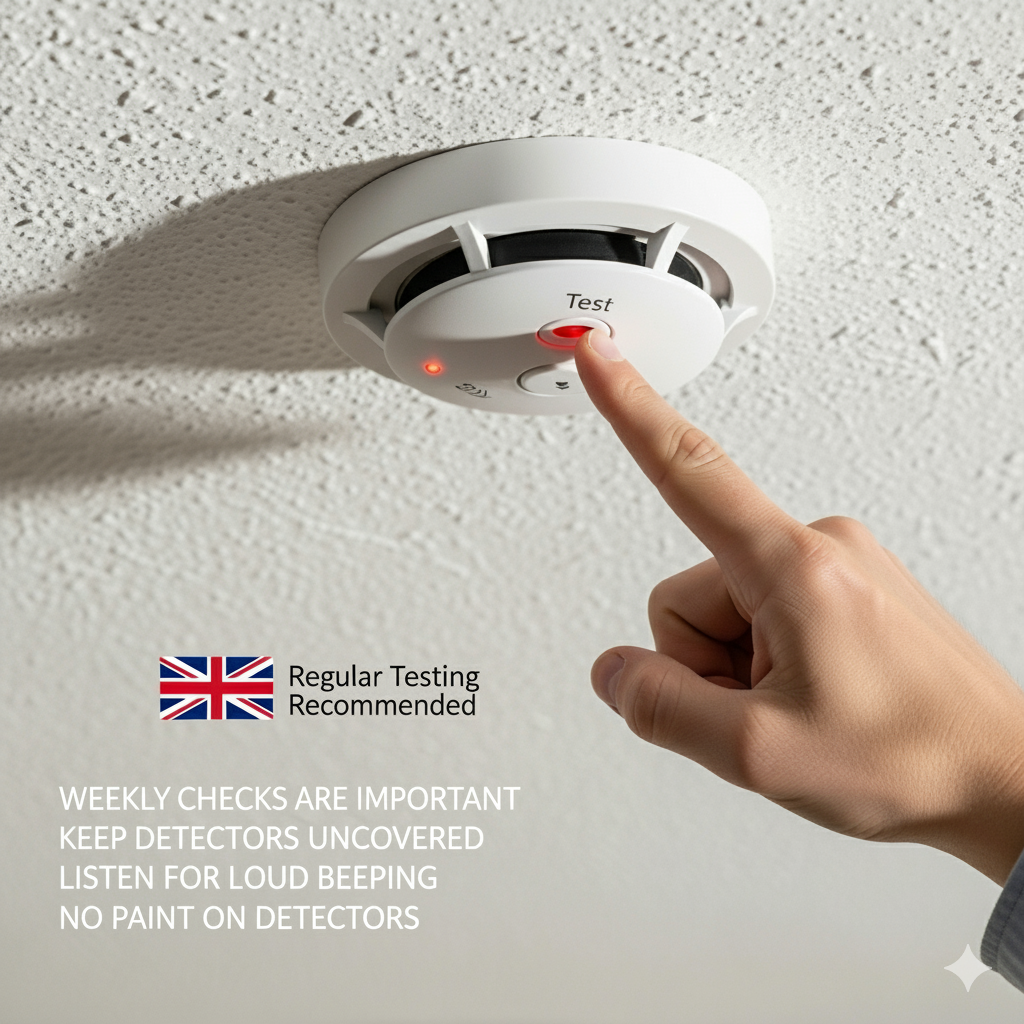EICR -The Electrical Safety Standards in the Private Rental Sector 2020
Information for landlords and property managers
Elevate Your Electrical Safety: The Indispensable EICR in Leicester
For homeowners, landlords, and property managers across Leicester, ensuring the safety and integrity of electrical installations is not merely a recommendation – it's a critical responsibility. An Electrical Installation Condition Report (EICR) is your definitive safeguard, providing a thorough assessment of your property's electrical health. At 786 Electricals Ltd, we are Approved & Registered Electrical Contractors, dedicated to delivering meticulous and compliant EICR services that prioritize your safety above all else.
Our team of competent electricians in Leicester possesses the extensive qualifications, skills, and experience required to perform EICRs safely and accurately. We are fully insured with comprehensive public liability (PL) and professional indemnity (PI) insurance, offering you complete peace of mind. Furthermore, our proud membership in leading electrical contracting associations, including the National Association of Professional Inspectors & Testers (NAPIT 14212), underscores our commitment to the highest industry standards and unwavering compliance with regulations like The Electrical Safety Standards in the Private Rented Sector (England) Regulations 2020.
Understanding the EICR: More Than Just a Certificate
An EICR is an official, in-depth document that details the findings and test results of a comprehensive inspection and testing of your existing electrical installation. Its sole purpose is to determine whether the electrical system is in a satisfactory condition for continued service. This isn't just about ticking a box; it's about proactively identifying potential hazards that could lead to electric shock, fires, or damage to property.
Why is an EICR an Absolute Necessity?
Electrical installations, like any other system, are subject to deterioration over time. Normal aging, general wear and tear from daily use, occasional damage from misuse or carelessness, and even unauthorised DIY projects by tenants can all compromise electrical safety. A lack of proper maintenance further exacerbates these risks.
An EICR addresses these issues by:
- Identifying potential hazards: Detecting overloaded circuits, faulty wiring, inadequate earthing and bonding, or outdated components.
- Preventing electric shocks and fires: Ensuring protective devices like RCDs (Residual Current Devices) function correctly and that insulation is intact.
- Ensuring compliance with regulations: For landlords, adhering to The Electrical Safety Standards in the Private Rented Sector (England) Regulations 2020 is a legal obligation. Non-compliance can lead to significant fines (up to £30,000) and invalidate insurance claims.
- Providing peace of mind: Knowing your electrical system has been professionally inspected and deemed safe.
The Core Objectives of an EICR
A well-executed EICR aims to confirm:
- Adequate protection against electric shock and electrical burns: Verifying that safety measures are in place to prevent injury.
- Protection against damage to property by fire: Identifying and addressing any conditions that could lead to electrical fires.
- That the installation is not damaged or deteriorated: Assessing the physical condition of wiring, accessories, and consumer units.
- Identification of non-compliances with BS7671: Highlighting deviations from the current Wiring Regulations.
- Detection of defective electrical work(s), overloading, age, or wear and tear: Pinpointing specific issues affecting safety and performance.
What an EICR Consists Of: A Detailed Process
The EICR process is meticulous and involves several stages to thoroughly assess your electrical installation:
Visual Inspection: Our electricians will meticulously examine all accessible parts of your electrical system, including switches, sockets, light fittings, consumer units, and visible wiring. They look for signs of burning, damage, overheating, incorrect installations, or general wear and tear. This crucial first step can often reveal obvious issues that require further investigation.
Dead Testing: With the electrical installation safely disconnected from the mains power supply, a series of "dead tests" are performed. These include:
- Continuity Testing: To check if conductors (wires) are properly connected throughout a circuit.
- Insulation Resistance Testing: To verify the integrity of the insulation around the wires, ensuring electricity doesn't leak or pose a shock risk.
- Polarity Testing: To confirm that connections are wired in the correct sequence.
Live Testing: Once dead testing is complete and the system is re-energized (with utmost caution), "live tests" are conducted. These include:
- Earth Fault Loop Impedance Testing: To ensure that in the event of an electrical fault, the protective device (e.g., circuit breaker) will disconnect the power supply quickly enough to prevent danger.
- RCD Operation Testing: To check that Residual Current Devices (RCDs) trip within the required timeframes, providing vital protection against electric shock.
Throughout the EICR, our electrical inspectors will make observations, assigning a recommendation code to each:
- C1 = Danger Present, Immediate Remedial Action Required: This is the most severe code, indicating an immediate risk of injury or fire. Immediate action is essential to eliminate the dangerous condition.
- C2 = Potentially Dangerous, Urgent Remedial Action Required: This highlights a potentially dangerous condition that requires urgent attention to prevent it from becoming a C1.
- C3 = Improvement Recommended: This code suggests that while the installation is safe for continued use, improvements could be made to enhance its safety or bring it up to the latest standards. It does not indicate an immediate danger.
- FI = Further Investigation: This means a definitive code could not be given without further, often non-destructive, investigation.
Navigating Potential Disturbances
For safety and accuracy, disconnecting the installation from the mains electrical power supply is necessary during the EICR. This means power will be switched on and off periodically throughout our visit. We understand this can cause inconvenience, but it is a fundamental requirement for a thorough and safe inspection. We always strive to work efficiently and communicate clearly to minimise disruption.
How Long Does an EICR Take?
The duration of an EICR varies depending on the size and complexity of the property. Typically, it can take anywhere from two to six hours for a standard residential property. Larger properties or those with more complex electrical systems may require more time. The presence of two electricians can often reduce the overall completion time.
EICR Validity: Understanding the Lifespan
Under The Electrical Safety Standards in the Private Rented Sector (England) Regulations 2020, the maximum frequency between EICR inspections and tests for privately rented properties is five years. This applies to newly wired properties or older installations deemed free of defects.
However, it is crucial to understand that this is the maximum interval. Landlords are under an ongoing obligation to assess the risk an installation poses during occupancy and adjust the frequency accordingly. For instance, if routine property inspections reveal damaged electrical sockets, switches, or lights, or if there's any indication of a fault, a new EICR or immediate remedial work should be considered sooner. Best practice from bodies like NAPIT and the IET also recommends a visual check or a new EICR between tenancies.
What Happens After Your EICR?
Your comprehensive EICR will be emailed to you within 24 hours, regardless of the outcome (satisfactory or unsatisfactory). In line with regulations, we retain a copy of the document, which can be made available to you upon email request.
For landlords in Leicester, it is your legal responsibility to:
- Provide a copy of the EICR to each existing tenant within 28 days of the inspection.
- Provide a copy to any new incoming tenants before they occupy the property.
- Supply a copy of the EICR to the local housing authority within seven days if requested in writing.
- Only a satisfactory outcome is acceptable to be compliant with The Electrical Safety Standards in the Private Rented Sector (England) Regulations 2020.
What if the Property Fails?
If the EICR determines the electrical installation is unsatisfactory for continued use, the report will clearly detail all defects, observations, and recommended improvements. Photos of non-compliances will be included for clarity.
Crucially, if remedial works are required, an estimate will be provided. Landlords then have 28 days from the date on the EICR to ensure these remedial works are carried out by a competent person. For C1 (Danger Present) issues, immediate action is paramount and should not wait.
A Critical Warning: The Dangers of "Cheap" EICRs
In an effort to save money, some property owners may be tempted by incredibly low-priced EICR offers. We cannot stress enough the profound risks associated with such "bargain" services. Many within the electrical industry know that these unsustainably low prices mean the inspection and testing process is almost certainly rushed, superficial, and fundamentally flawed.
Here's why a "cheap" EICR can be incredibly dangerous and provide false assurance:
- Superficial Inspections: A proper EICR takes time. Electricians need to meticulously inspect every circuit, fixture, and connection. A cheap service often means shortcuts are taken, vital parts of your electrical system are overlooked, and accessories may not be opened up for internal examination as recommended (e.g., checking for loose connections behind sockets).
- Missed Hazards: Rushed or incomplete checks dramatically increase the likelihood of missing serious underlying issues. These could be anything from degraded cable insulation, incorrect cable sizing for the load, to inadequate earthing or bonding – problems that are invisible to the untrained eye but pose significant risks of electric shock, overheating, and fire.
- Inaccurate Testing: The "dead" and "live" tests require careful setup and precise readings. A rushed job might involve quick, perfunctory tests that don't accurately reflect the system's true condition, or worse, incorrect test procedures that yield false "satisfactory" results.
- Lack of Competence: Extremely low prices often attract unqualified or inexperienced individuals who may not possess the required knowledge of BS7671 regulations, safe testing procedures, or even adequate insurance. A truly competent person understands the nuances of an electrical installation and the potential dangers.
- Invalidated Insurance and Legal Exposure: If an electrical incident occurs (fire, shock, injury) and it's discovered that your EICR was rushed or incomplete, your insurance policy could be invalidated. For landlords, this can lead to substantial fines, legal action, and even prosecution under the Electrical Safety Standards in the Private Rented Sector (England) Regulations 2020. The cost of a proper EICR pales in comparison to the financial and human cost of an electrical disaster.
How to Spot a EICR Red Flag:
- Unrealistically Low Prices: If a quote seems too good to be true, it almost certainly is. A proper EICR requires significant time, specialist equipment, and highly trained personnel.
- Extremely Short On-Site Times: Be wary if the electrician states they can complete the EICR for a typical 2-3 bedroom property in less than 2-3 hours. This often indicates a visual-only check or rushed testing.
- Lack of Clear Explanation: A reputable electrician will be happy to explain the process, the tests involved, and the implications of the EICR codes.
- No Professional Body Membership: Always choose electricians who are members of recognized schemes like NAPIT, NICEIC, or ELECSA. These bodies ensure competence, adherence to standards, and provide consumer protection. You can verify their membership online.
Your electrical safety, and that of your property and its occupants, is not an area to compromise on. Investing in a thorough, professional EICR from a reputable firm like 786 Electricals Ltd in Leicester is an investment in genuine safety and long-term peace of mind.

